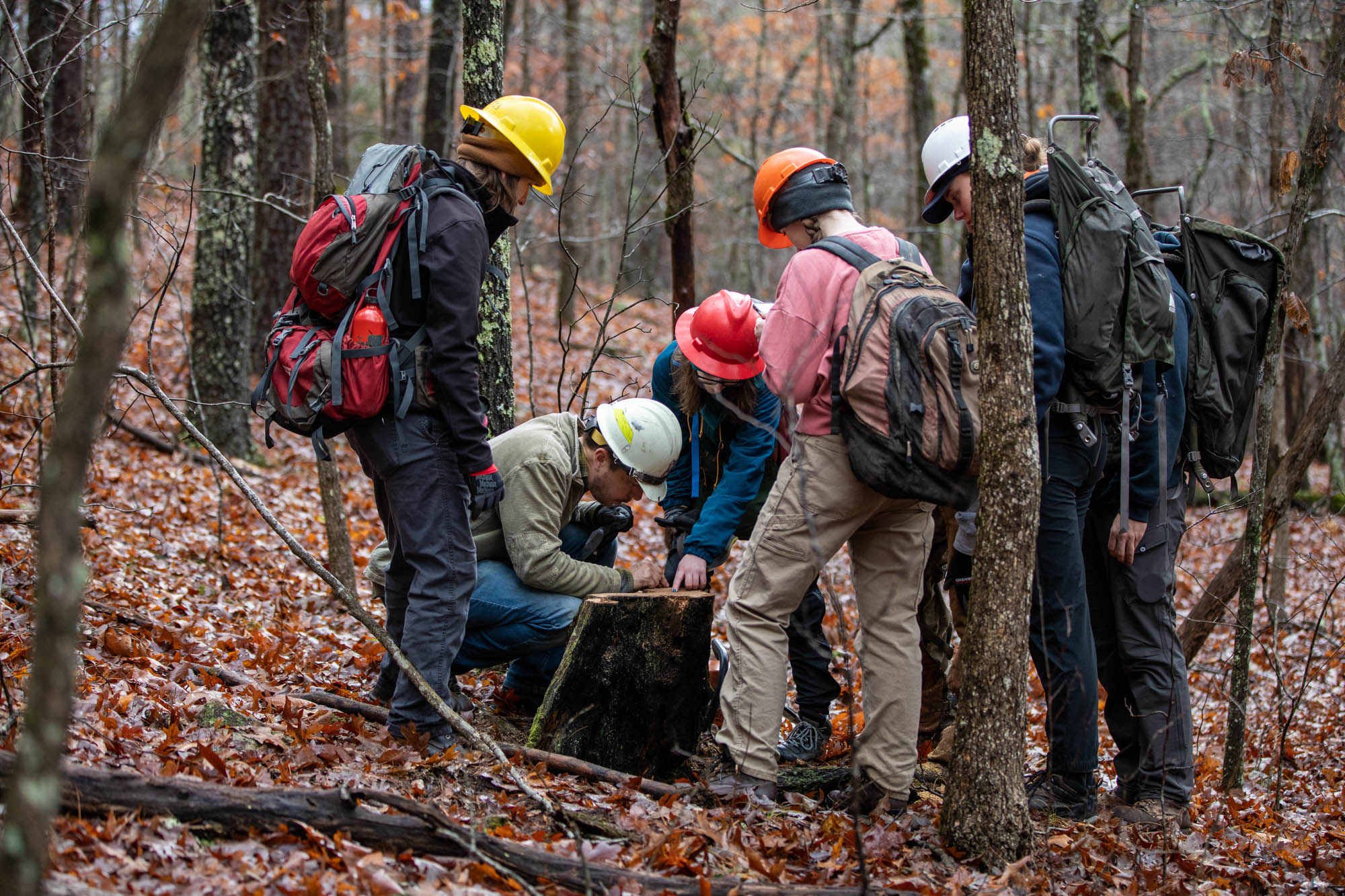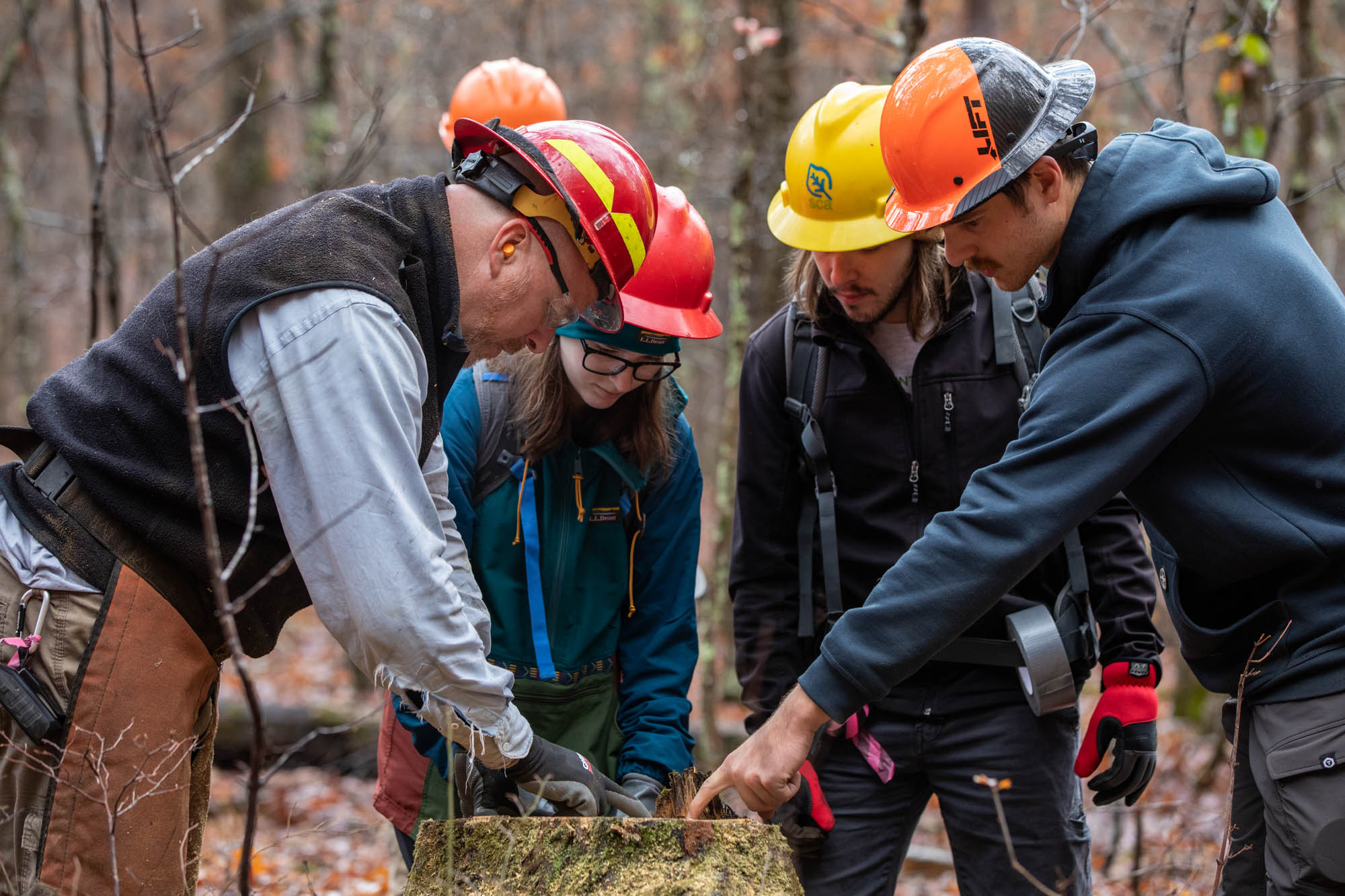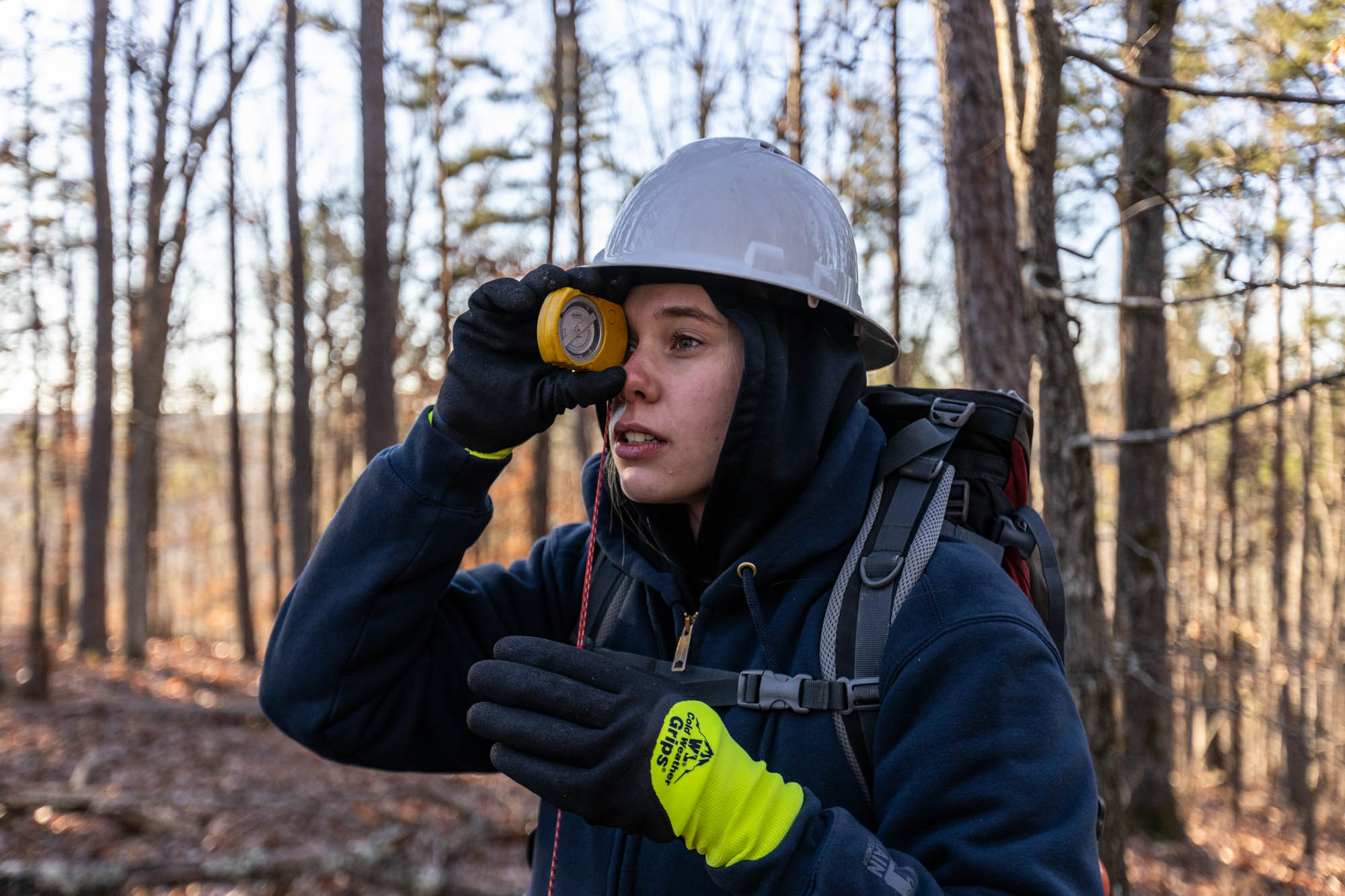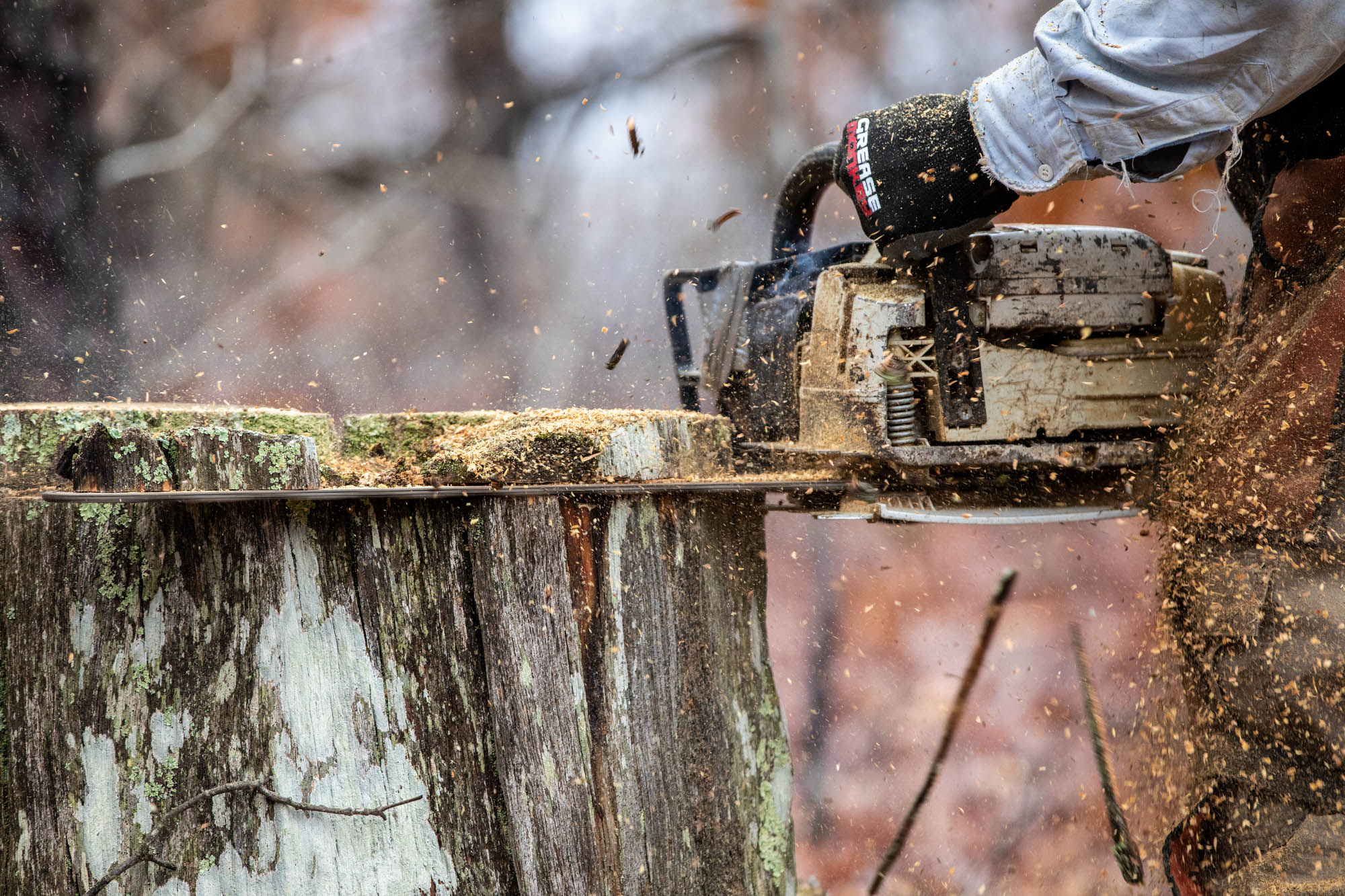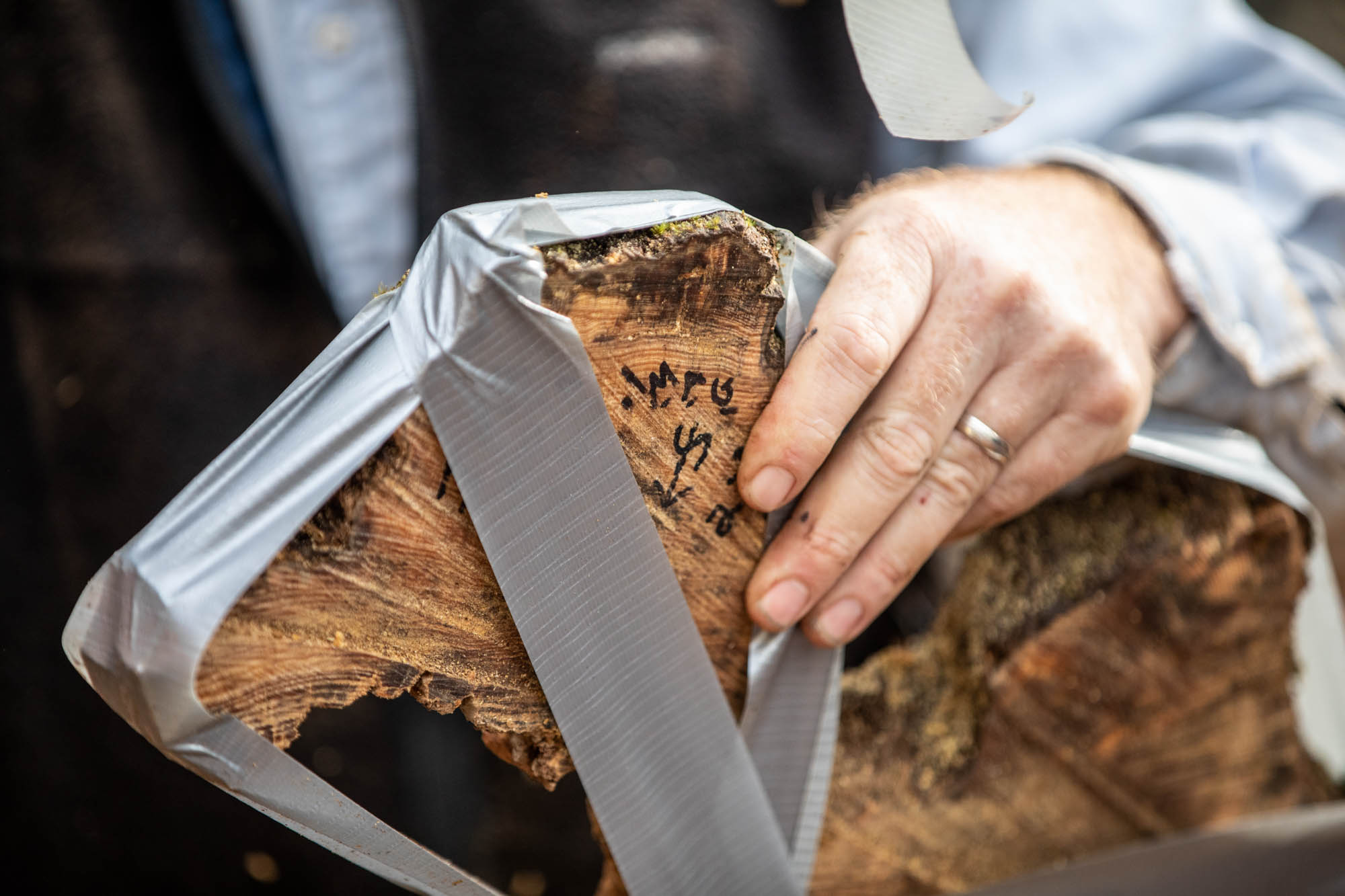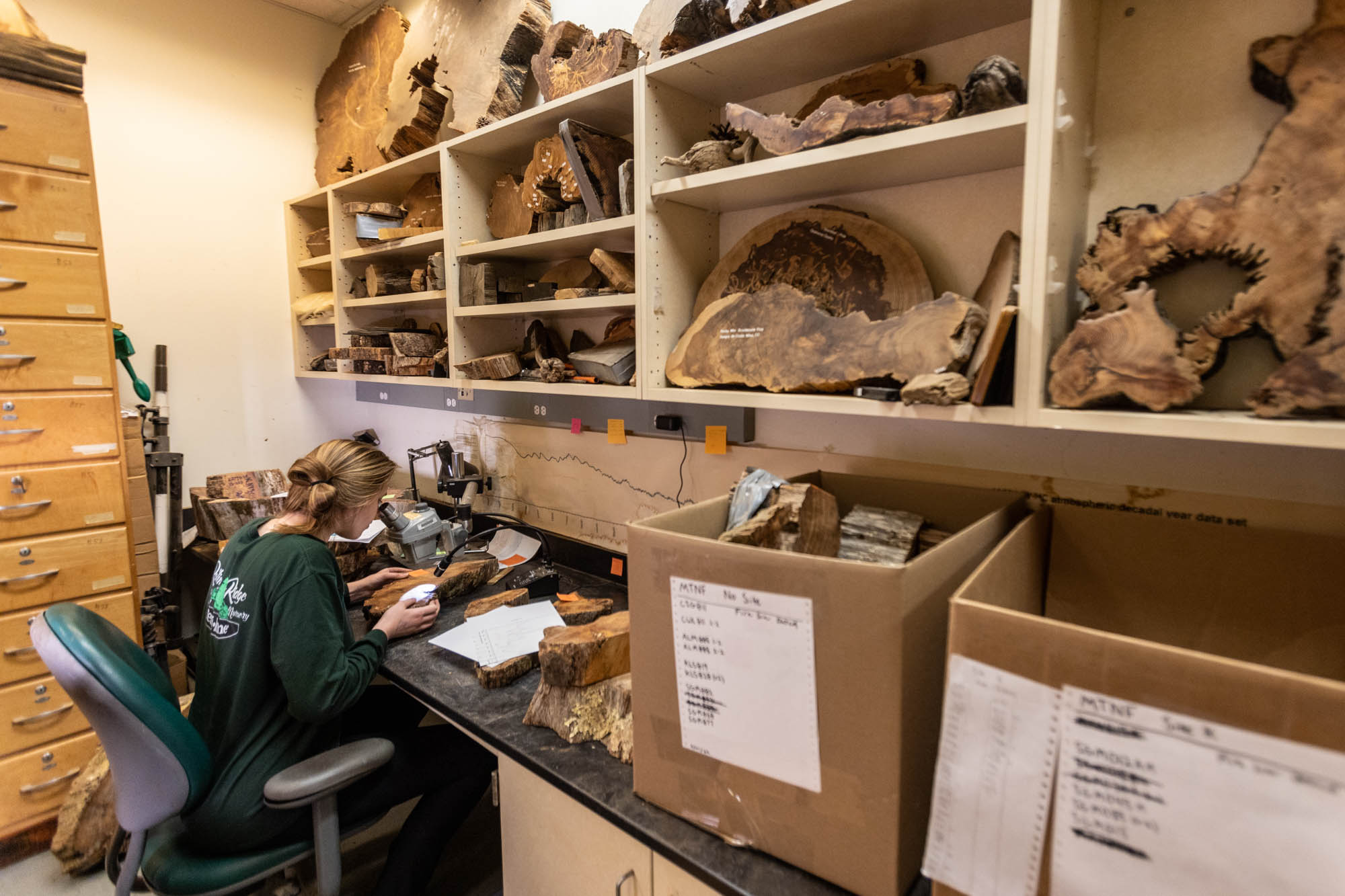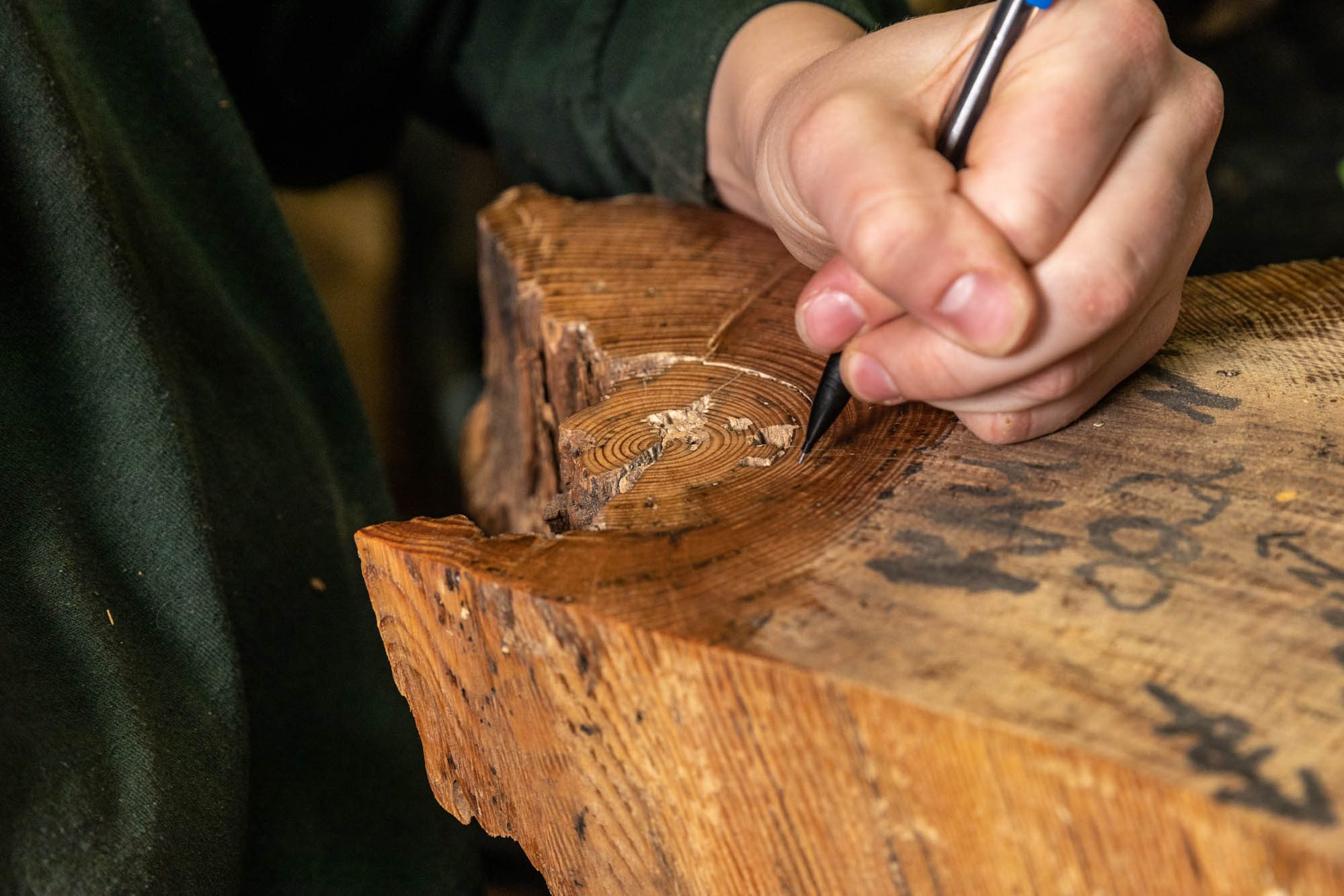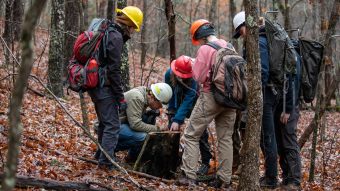Nov. 8, 2023
Contact: Courtney Perrett, 573-882-6217, cperrett@missouri.edu
Photos by Abbie Lankitus
Video by Mizzou Visual Productions
Although fire is often thought of as a force of danger and destruction, University of Missouri professor and forest fire expert Michael Stambaugh sees its potential to protect forests as climate change threatens to increase both the frequency and intensity of wildfires.
Funded through the Bipartisan Infrastructure Law and U.S. Forest Service for approximately $1.2 million, Stambaugh’s latest study will explore how fires (controlled fires and wildfires) of varying severities and frequencies affect forest ecosystems, particularly hard/yellow pine trees. Specifically, the study will look at fire-affected forests and their growth, wood products, ecosystem amenities, wildlife habitats, and associated perceptions of industry stakeholders.
“In the southeast United States, there's a strong ‘fire culture,’” said Stambaugh, an associate professor in the College of Agriculture, Food and Natural Resources. “Many groups use fire to benefit their forest management including natural resource professionals, industries, and private landowners, including ranchers. Across the U.S. there’s also a long legacy of knowledge about fire use in Indigenous communities who use fire for all kinds of reasons, including for cultural and traditional aims. But, if you look at the area of land that's controlled burned across the United States today, most of it is in the southeast. By comparison, very little controlled burning is done in the west. Given the western U.S. wildfire crisis, I think that’s something we need to reverse.”
One of the primary goals of Stambaugh’s new study is to assess the effects of fire on forests in various locations in the western and southeastern parts of the country. His team is measuring how fires affects forest products, such as wood volume, strength, density and tree growth rates including recovery following fire.
Although wildfires are often considered destructive, Stambaugh argues that when done correctly, they can be particularly valuable. The frequent controlled burning of forests with low-intensity fires can reduce the hazardous buildup of fuels that can increase the likelihood of severe wildfires.
“When a fire burns past a tree and injures it, the tree has several responses to survive and recover,” Stambaugh said. “We're focused especially on pine tree responses to fire injury because they are highly resistant to fires and, as fire activity increases in the future, we expected them to be more prevalent in a future “fiery world.”
Since May, Stambaugh and his team have been sampling in priority wildfire regions including the Plumas National Forest in the Sierra Nevada Mountains of northern California. Next field season they will expand their work to the Stanislaus and Eldorado National Forests, also in California. For comparisons, the researchers are also working in frequently controlled burned pine forests in the southeastern U.S. where pine forests have a long history of very frequent fire (every 3-5 years).
In the future, fire activity in many pine forests is slated to increase, both in the amount of controlled burning and in the activity of wildfires due to climate change. The goal is to determine how these future forests with fire-exposed trees will be different with a focus on their forest products and volumes.
While fire might seem contradictory to good forest management, it’s not. Stambaugh said it is a vital force in preserving some forest ecosystems and the services on which humans depend, such as clean and abundant water, air, habitat, recreation and everyday products like boards and paper.
“Most people don't understand the critical importance of fire in forests very well,” Stambaugh said. “Many people are scared of fire and don't have exposure to a direct flame as part of daily living. This is interesting because, for millions of years, fire was a fundamental part of human survival and advancement. I think it's important that the public relearn the importance of fire and the potential benefits from fire in our forest ecosystems.”
